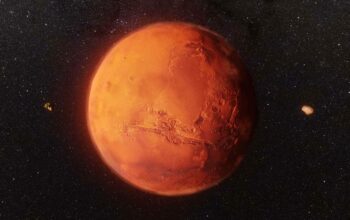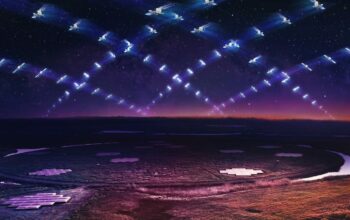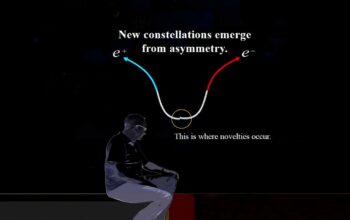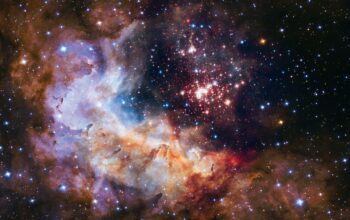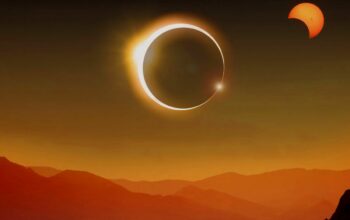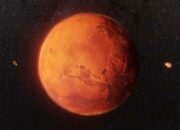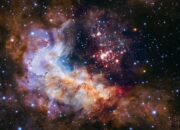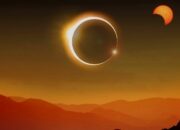The Moon, a celestial body that has captivated humanity for millennia, is once again at the forefront of scientific inquiry and exploration. As the world gazes upward, the question arises: what drives the renewed interest in lunar science, and can we truly understand its multifaceted mysteries? To answer this, one must consider a confluence of factors that have resurrected the Moon from the shadows of forgotten exploration—a bygone era of the Apollo missions, where lunar landings were celebrated at the pinnacle of human achievement. Yet, as we embark on a new era of lunar exploration, the scientific community is faced with intriguing challenges and opportunities for groundbreaking discovery.
Firstly, it is essential to understand the historical context that underscores the significance of the Moon in the realm of space exploration. The Apollo program, which dazzled the world between 1969 and 1972, not only achieved remarkable feats of engineering and bravery but also catalyzed advancements in diverse scientific fields. The lunar samples retrieved during these missions provided unprecedented insights into planetary formation, geological processes, and the evolution of celestial bodies. However, as the dust settled on the lunar surface following the last Apollo mission, scientific interest waned, leading to a dearth of new lunar data for decades.
Fast forward to the present day; the lunar landscape is once again a focal point for scientists, engineers, and policymakers alike. Various factors contribute to this resurgence, including technological advancements, international partnerships, and an increasing awareness of the Moon’s potential resources. For example, recent innovations in spacecraft design and robotic landers have significantly reduced the cost and risk associated with lunar missions, making them more accessible to both governmental space agencies and private enterprises. Moreover, these technological strides enable scientists to design sophisticated instruments that can probe the Moon’s regolith and investigate its hidden composition.
What then, can we expect from this renewed interest in lunar science? One compelling proposition is the notion that the Moon may be a veritable treasure trove of resources. Helium-3, for example, is an isotope posited to be a potent fuel for future nuclear fusion reactors. The Moon’s regolith, deposited by billions of years of meteoroid impact, may serve as a reservoir of this valuable isotope, which could facilitate humanity’s quest for sustainable energy. However, the potential challenges of extracting and harnessing such resources must not be overlooked. How will we navigate the ethical and logistical hurdles involved in mining celestial bodies, and what repercussions might this have on our planetary stewardship?
Moreover, the Moon is not merely a passive architectural wonder floating in the void; it is an active participant in the solar system’s dynamics. The study of lunar geology holds profound implications for our understanding of planetary processes beyond Earth. The presence of impact craters, volcanic plains, and polar ice deposits on the Moon provides a unique laboratory for examining geological phenomena across various celestial bodies. Investigations into these surface features can elucidate the Moon’s geological history and its interactions with solar winds, impacting theories of planetary system formation.
Yet another dimension to lunar science lies in astrobiology. The Moon’s stark environments, devoid of life as we know it, challenge scientists to reconsider the conditions necessary for life’s emergence and survival in extreme conditions. Importantly, the Moon’s poles harbor water ice in permanently shadowed craters, which presents another tantalizing question: could these sites have once hosted microbial life? Understanding whether life can originate in such inhospitable locales hinges on the analysis of ice samples and the search for biomarkers.
As international collaborations grow, the prospect of returning humanity to the lunar surface becomes increasingly tangible. Missions planned by NASA, ESA, and ambitious private organizations like SpaceX herald a new era of lunar exploration. Each of these endeavors raises provocative questions surrounding ownership, scientific responsibility, and the philosophical implications of sharing the cosmos. Will we, as a unified species, work cooperatively in the pursuit of knowledge, or will our historical tendencies toward competition reignite within this celestial arena?
The Moon also serves as a launching pad for future cosmic exploration. As a waypoint for ambitious missions to Mars and beyond, understanding the lunar environment is paramount. The Moon’s low gravity and proximity to Earth present an invaluable opportunity to test technologies, develop sustainable habitats, and train astronauts for more treacherous journeys across the solar system. However, as exciting as this prospect is, it invites critical examination of the long-term strategies concerning lunar habitation. Are we prepared for the psychological and physiological challenges posed by extended stays on the Moon, and how do we ensure that we do not replicate mistakes made during our early explorations?
In conclusion, the Moon’s significance as both a scientific and cultural touchstone cannot be overstated. With a plethora of scientific inquiries awaiting exploration, renewed lunar science offers a chance to deepen our understanding of our planetary neighbors, the Earth’s evolution, and perhaps, the very nature of life itself. Yet, the challenges of this grand endeavor loom large: ethical considerations, resource utilization, and international collaboration must all be meticulously navigated as humanity steps once more onto the lunar stage. So, as society looks once again toward the Moon, one must ponder: are we prepared to meet the challenges and seize the opportunities that lie ahead in this compelling journey back to our nearest celestial neighbor?

